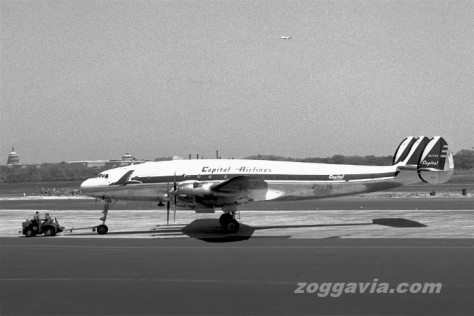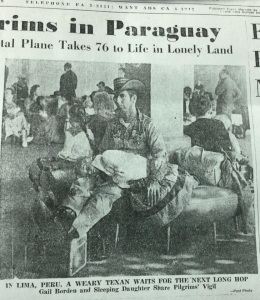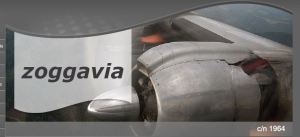December 29, 1963
Pilgrims in Paraguay
Temperamental Plane Takes 76 to Life in Lonely Land
By Bernard Murphy
I have just flown 14,000 miles to bring back the story of one of the strangest pilgrimages of modern times.
It is the story of 76 Americans, most Texans and 24 of them from Houston, who have begun, a back-to-nature life in the lonely region of Northern Paraguay called the Chaco. During the Gran Chaco wars of the 1930s it was called “The Green Hell.”
Here the pilgrims, members of a religious group known as Camp Beulah, Inc. plan to build a church and a mission school and their own self-sufficient community.
Until they can become self-sufficient, they are living on a 249,000-acre ranch owned by an American company, Pan Western Enterprises, Inc. The men are working as ranchers and farmers.
They are housed in crude huts made of palm trees and mud by native labor.
Their encampment is 420 miles north of Asuncion, capital of Paraguay. There are no roads in the Chaco and the only way to reach Estancia Del Sol, the pilgrims’ settlement at Puerto Milhanovich is by river or by small plane.
UNDER THE blazing sun of what is now high summer in Paraguay, the group from Texas is leading a life similar in many respects to that of the Swiss Family Robinson.
The women who [*Unknown word*] washing machines, refrigerators and air conditioning, now wash their clothes in the wide River Paraguay.
Their water, about 70 degrees if drunk immediately, and 85 to 90 degrees if allowed to stand, also comes from the river.
They cook their simple meals on a wood-burning stove.
THEIR HOUSES have windows devoid of glass and floors which are the earth of the Chaco itself.
There are no bathrooms, electric lights, modern sanitation or means of communication with the rest of the world. Transport in the settlement is by oxen cart.
Their neighbors are the Guarani Indians and the picturesque gauchos of this rich cattle country.
Masses of wildlife live in the Chaco around them, including jaguars and pumas and snakes. The river is filled with crocodiles, water [*gs] and other beasts.
James A. St. John, a 3[*] year-old former Baptist minister and rancher, a native of Bloomington, near Victoria, is the leader of the group.
I FLEW TO Paraguay with the pilgrims and lived with them for almost a week in the heat of the Chaco.
In keeping with the strangeness of life of these modern-day pioneers was the flight from Texas to Paraguay in an ancient chartered airliner.
The plane was constantly beset by mechanical troubles. It took us six days and six nights to reach Asuncion. Our flight included an emergency landing at a big U.S. Air Force Base in the Panama Canal Zone and a crossing of the towering Andes Mountains with failing fuel pumps and a radio that went dead. Financial crisis followed crisis during the trip.
In 25 years of flying, I don’t think I have ever met a more reluctant airplane than old ZP.CAS
THIS WAS THE ancient Constellation in which the pilgrims, large dogs and seven puppies flew from Brownsville to far-off Paraguay.

[Photos from http://www.zoggavia.com/c_n_1964.html%5D
When the plane took off, after nearly a month of delays, most of the pilgrims had been waiting for almost exactly a year to reach Paraguay.
They came together at a missionary training school and boys camp owned by St. John at Coalmont, near Tracy City, Tenn.
Here in December, 1962, says St. John, “God spoke to us and gave us a message to go to Paraguay and do missionary work.”
ST. JOHN SOLD his ranch on which the school, known as Camp Beulah, was situated to buy equipment to take to Paraguay.
He contacted the Paraguayan consulate in New Orleans and eventually got into touch with James J. McRoberts.
McRoberts, an oilman and qualified engineer, is president of Pan-Western Enterprises, Inc., a company with offices in New Orleans and Asuncion, which has extensive land holdings in Paraguay.
At first McRoberts refused to have the Camp Beulah settlers on his lands. But he was impressed with the successful development of agriculture in Paraguay by the Mennonite religious colony at Campo Esperanza. So finally he agreed to provide a camp and to employ the skilled men of Cap Beulah, Inc.
THE WOULD-BE missionaries and their families moved from Tennessee to Harlingen. By May most of them were moved into a former restaurant and tourist camp.
The group grew, as friends said they would like to take the trip.
St. John contacted Hugo Zanelli, a Houston freight forwarder and asked him to arrange for the group’s farm equipment to be shipped to Paraguay.
By the end of October, Zanelli had shipped about 400 tons of equipment for St. John from the Port of Houston.
IT INCLUDED six tractors, three electric power plants, four bulldozers, a sawmill, two boats, food, clothing, refrigerators and three printing presses. With the presses the group plans to print schoolbooks and religious materials.
At the beginning of November, 69 men, women and children were waiting at Harlingen for a plane to take them to Paraguay.
Nov. 7 was planned as the day for take-off. But a suitable plane at the right price could not be found.
Meanwhile, as the group waited patiently at Harlingen, the ranks of the pilgrims grew. Seven new puppies arrived, Gail M. Borden, a 33-year-old Woodsboro cowboy, his wife Mozelle, and two children, Gaylean, 8, and Cheryl, 7, decided to go along. A giant Otoe Indian, Lawrence Pierce Murray of Ponca City, Okla., his daughter, Jacqueline, 4, and son, Franklin, 3, were the last to join.

FINALLY LAPSA, a Paraguayan airline company, agreed to fly the settlers out to Asuncion in a Constellation, which it was leasing at Miami.
For nearly a month the plane was expected almost daily to arrive at Brownsville, Time after time the settlers packed their bags, said goodbye to their relatives and prepared to leave. But no plane came.
St. John became so desperate that he explored the possibility of getting a plane elsewhere. But no other line would fly the group for less than twice the sum quoted by the Paraguayan firm.
WHAT THE settlers didn’t know was that the Constellation stood in a hangar for two years without taking to the air.
It was being overhauled and tested and the mechanics were desperately trying to coax it into the air.
They were encouraged constantly by Lorenzo J. C. Joy, a young Paraguayan travel agent, who had flown to Miami to supervise the trip.
For Joy the next few weeks were joyless. All he had was headaches. But a splendid enforced vacation at Miami was enjoyed by two diminutive and charming Paraguayan air hostesses, Miriam Centurion, 18, and Lidia Gimienez, 22, who had flown out from Asuncion to look after the pilgrims.
McROBERTS wasted about a week of his time trying to get the pilgrims airborne. He flew from Asuncion to Harlingen. After repeated telephone calls to Miami, McRoberts flew down to Florida to see what was happening.
“God is sure handling our journey: Hell send the plane when the time is right,” said the patient, prayerful Harlingen campers.
Capt. Fred Sharrer, a veteran ferry pilot of Miami, took command and at least the unbelievable happened – the plane arrived at Brownsville. The excited pilgrims loaded their baggage, their guns, and dogs onto trucks and drove to the airport.
THEY FOUND Capt. Scharrer and his crew of three, including Frank Crosson, of Miami, the flight engineer, Frank Cardus, a pilot from Paraguay, and another American pilot, resting in a nearby motel.
Sharrer explained that fuel pump trouble developed on the flight from Miami. There would be a delay while another pump was flown out and fitted to the plane.
Praising the Lord for having uncovered this defect in time, the pilgrims returned to their camp to wait still further.
THEY HAD ONLY the clothes in which they stood. Since all kitchen utensils had been packed, they ate only sandwiches.
But at long last, at 6:30 AM on Dec. 5 – a month late – the plane was ready. I joined McRoberts and the 76 pilgrims at the airport in Brownsville.
The plane’s load was so heavy that nearly a dozen duffle bags filled with the pioneers’ clothing, and two German Shepherd dogs, had to be left behind.
THEN THE motors came to life. The passengers prayed and sag, “Launch Out Into the Deep.” The old plane shook as the motors were revved up. For most of the passengers this was the first time in an airplane.
“Sister Long’s eyes,” noted Houston preacher Jack Wood, “are as big as a dollar.”
After seven more hours the plane landed in Tocumen International Airport in Panama. Here there was a three-hour delay while further adjustments were made to the fuel pumps.
At 7 PM a tired band of men, women and children departed again on the next leg of the trip, 1,300 miles to Lima, Peru.
TWO HOURS later, with the fuel pumps giving trouble again, the plane turned back towards U. S. Air Force Base in the Canal Zone.
The travelers stayed overnight at the base while a civilian engineer worked on the fuel pumps.
The next day, with the plane still not ready, the pilgrims obtained special permission to entire the Republic of Panama.
They stopped briefly at the luxurious Panama-Hilton on their way to a Tocumen airport where the plane was to pick them up.
BUT AT THE airfield they learned the fuel pumps still were not working.
So there was nothing to do but to put the whole flock up at one of the finest hotels in Panama, the La Siesta, and pay the bill.
Joy wanted to fly down through Brazil, where LAPSA had bases and credit. Capt. Sharrer had little faith in the state of the plane and thought it
safer to fly down the coast of Peru and Chile, where a sea ditching would be less dangerous than a forced landing in the jungles of Brazil.
MEANWHILE hotel bills, repair costs, and landing fees, and the plane’s huge appetite for gasoline had to be paid in cash.
Joy, McRoberts and Capt. Sharrer pooled their available money to pay the engineer who repaired the plane and to buy gas. St. John went into town and bought 100 oranges at one penny each and as many bananas to feed the group on the flight.
Throughout the day the women of Camp Beulah, Inc., in their old-fashioned long dresses, walked around the hotel’s swimming pool while the less inhibited hostesses splashed in the water and played ping pong in brief swimsuits.
THE PATIENCE of the women and children amazed Joy. “Thank God I didn’t have a load of ordinary passengers,” he said. “I’d have shot myself by now, if I had.”
At each delay the tired travelers contented themselves that this was the will of the Lord.
At 11:05 AM on Saturday, Dec. 7, the plane was again ready for flight and we flew on for another seven or eight hours to Lima Peru
At Lima I made the biggest purchase of gasoline of my life.
We needed 3,000 gallons of fuel to fly on to Santiago Chili and McRoberts borrowed %500 from me to pay for it. This brought us to Santiago, a lovely city surrounded by snow-capped mountains, and a [sic] further forced delay because of fuel pump troubles.
At 8 AM on Tuesday – six days after leaving Brownsville – the Constellation was ready to take off from Santiago on the final 800-mile leg of the flight to Asuncion, capital of Paraguay.
Even Capt. Sharrer, our pilot, isn’t quite sure how the old plane made this last climb over the Andes.
THE FUEL pumps gave trouble again. One went out of action altogether. The radio went dead. But somehow Sharrer got that old plane with its great load over the towering mountains. The plane was not pressurized and therefore we had to fly over the lowest part of the mountains, known as “The Saddle,” where the tops of the hills are only 15,000 feet high.
The weather was rough and the old plane bucked like a bronco but at noon we were there and the nose went down for a safe landing in Asuncion.

Plane engine burned in January 1964
[“Aircraft was dismantled at Viracopos (near Sao Paulo) in 1964 after suffering an engine failure and of other problems on a ferry flight as ZP-CAS for Lloyd Aereo Paraguayo on 27 January 1964. http://www.zoggavia.com/c_n_1964.html ]
Dr. Angel De Aldecoa, a French-speaking Paraguayan who is vice president of Pan Western Enterprises, Inc., greeted us. Pan Western had prepared a free luncheon for the pioneers. They ate it after offering prayers for their safe arrival and singing hymns.
Passengers, luggage and the pen-weary dogs and puppies were transferred to two C-47 aircraft and a couple hours later we came down on the rough-and-ready landing strip of Estancia Del Sol, the palm, mesquite, and cactus wilderness which was to be a new homeland for the 76 settlers from Texas.


This is just as I remember it so many years ago. When we landed in Puerto Del Sol my brother, Richard Watts and myself stayed in the same Thatched Hut with Mr. Bernard Murphy and his kids. Oh what memories and life experiences . Randy Watts , I was 14 years old at the time.
LikeLiked by 1 person
Randy Watts here again, Richard and I shared a Hut with Mr, Murrray his kids , and the reporter Mr, Murphy from the Houston Post. Mr, Murrays son was the first one of us to be bitten by a piraña while playing in the river
LikeLiked by 1 person
Jo Ann Hill was the only other person I recall, who was bitten by a piranha.
LikeLike
What was Murphy like? I’ve wondered why he went.
I thought the huts were in Koonyataee.
Did you work with the men to build a camp? I don’t recall living in a camp, having a church, school, or a house with windows, doors, or floors, except dirt.
LikeLike
i was there houston tex
LikeLike